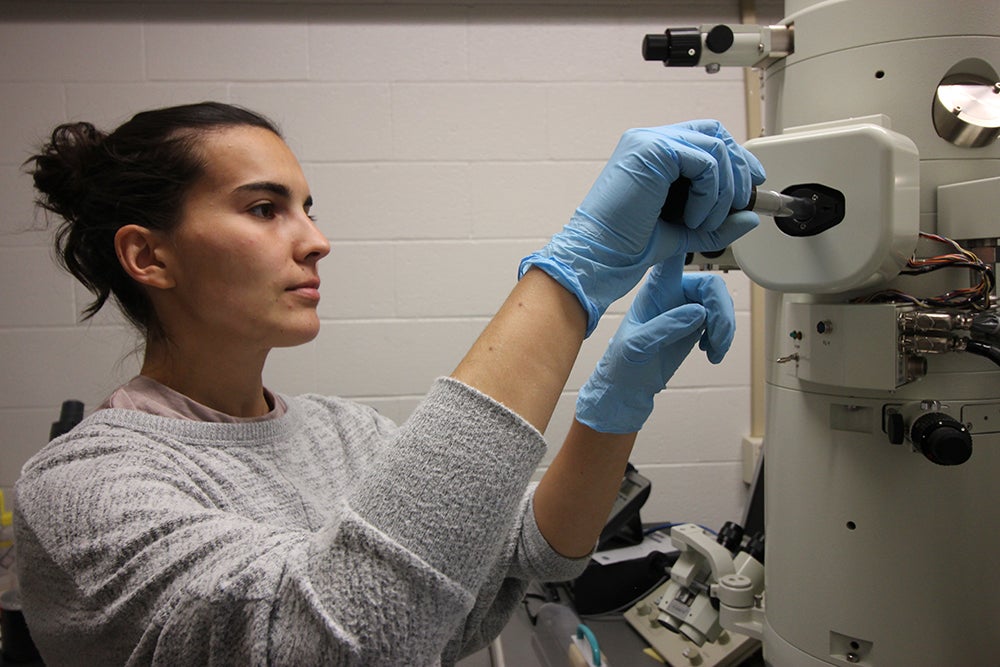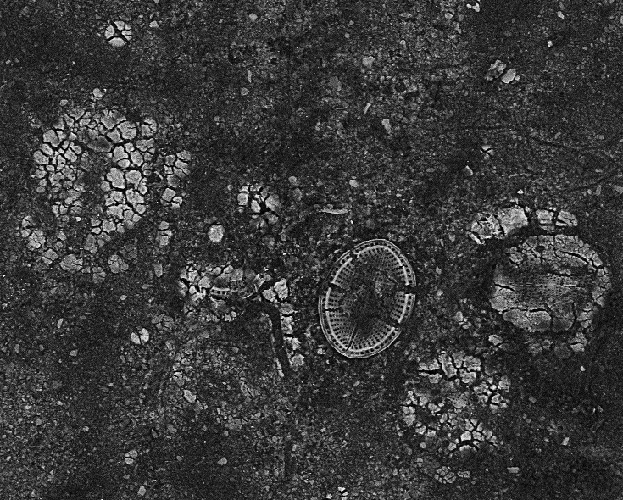
Dr. Irene Andreu listens intently with a group of graduate students to learn about the newly arrived confocal Raman microscope. As new director for the Rhode Island Consortium for Nanoscience and Nanotechnology (RIN2), the Huesca, Spain native has found a home guiding faculty and students in using some of the most high-tech pieces of research equipment available.
Andreu arrives from Simon Fraser University in Burnaby, British Columbia, where she worked as a post-doctoral researcher for three years in the Gates Research Group, studying nanomaterials for biomedical applications. In 2015, she completed her doctorate in physics at the Instituto de Ciencia Materiales de Aragon in Zaragoza.
“The food in Spain is so good and I’ll miss that!” she explains. “But here I can interact with a lot of different people and help them solve research problems.”
Now, she is not only managing the various material characterization instruments being utilized at RIN2, but also training researchers on how the equipment can generate the best results for their work.
“Our work does not happen in a vacuum, and people are using these machines outside of the university. Not everyone will end up doing academic research in the future, and the hands-on experiences here will help students as they pursue careers.”Dr. Irene Andreu, Dir. of Operations, RIN2
“A lot of our users have biological samples, the preparation for which I have had to improve my knowledge upon,” says Andreu. “There are so many different components inside a biological or environmental sample, and when you are examining materials like bacteria, ‘squishy’ things, we have to prepare those samples so that we can interpret the signals and how it relates to a project.”
The new RIN2 director, for example, has been freezing seawater samples for users in order to examine bacteria growth in suspension, a technique called cryo-scanning electron microscopy (CryoSEM).
Beyond the research, however, Andreu is hoping to build a network of faculty and students across the state who can share their own expertise on how to use RIN2’s equipment, as well as spur potential collaborations on future projects.

Since arriving in June, Andreu has trained 36 people in new microscopy techniques, and counts a dozen C-AIM graduate and undergraduate students as regular users.
“Right now, training is one-on-one,” she notes. “I think it would be good to organize workshops to give users a more theoretical background behind the equipment, to help them analyze their data and optimize the conditions for their measurements.
I help people use the equipment and then they leave, but it would be good if we can get users talking to each other.”
But why create a network among RIN2 users if they only need to use the equipment for specific projects? Many of the same techniques and tools, stresses Andreu, to which researchers are first exposed at RIN2 are being utilized in the real-world.
“A lot of material science-related companies developing new textiles, polymers and construction materials are using these microscopes,” she says. “Environmental safety, for example, is a field with a lot of jobs in asbestos remediation. The best way to find asbestos is with an electron microscope.”
Particularly for students working for the first time on RIN2’s equipment, the more informative a research experience Andreu can provide, the better.
“Our work does not happen in a vacuum, and people are using these machines outside of the university to understand and improve the things in your house,” she says. “Not everyone will end up doing academic research in the future, and the hands-on experiences here will help students as they pursue careers.”

 RI NSF EPSCoR is supported in part by the U.S. National Science Foundation under EPSCoR Cooperative Agreements #OIA-2433276 and in part by the RI Commerce Corporation via the Science and Technology Advisory Committee [STAC]. Any opinions, findings, conclusions, or recommendations expressed in this material are those of the author(s) and do not necessarily reflect the views of the U.S. National Science Foundation, the RI Commerce Corporation, STAC, our partners or our collaborators.
RI NSF EPSCoR is supported in part by the U.S. National Science Foundation under EPSCoR Cooperative Agreements #OIA-2433276 and in part by the RI Commerce Corporation via the Science and Technology Advisory Committee [STAC]. Any opinions, findings, conclusions, or recommendations expressed in this material are those of the author(s) and do not necessarily reflect the views of the U.S. National Science Foundation, the RI Commerce Corporation, STAC, our partners or our collaborators.